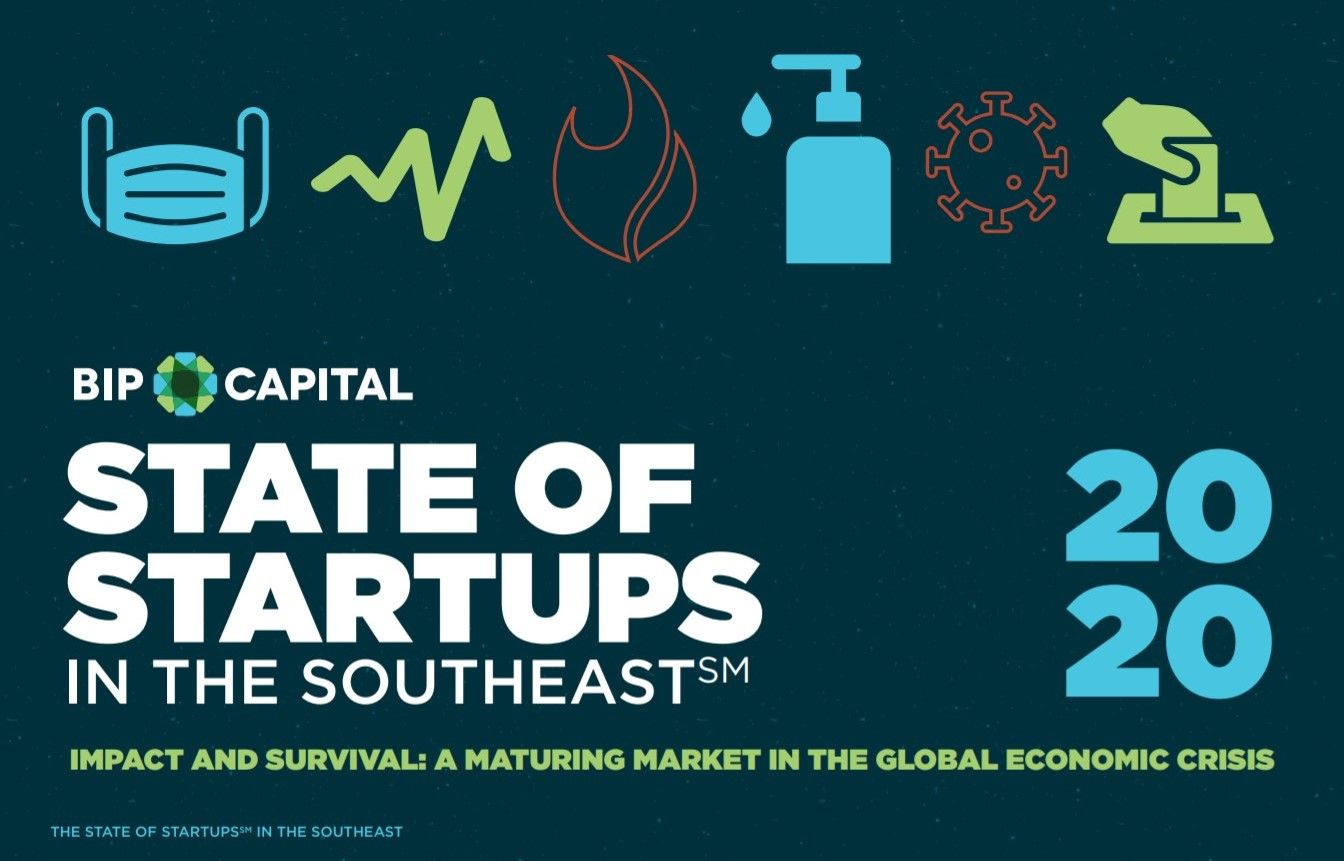Let's learn about Scaling via these 84 free stories. They are ordered by most time reading created on HackerNoon. Visit the /Learn Repo to find the most read stories about any technology.
How to over-engineer your next application, turn people into processes, and make billions along the way.
1. Five Powerful Growth Hacking Lessons Learned in Silicon Valley
 What your business can learn from Silicon Valley’s approach to grow customers
What your business can learn from Silicon Valley’s approach to grow customers
2. What's your growth rate?
 Guys! During the YC Startup School I gradually started to implement different ideas to track primary metrics and I have involved my team to set OKR (Objectives and Key Results) and track their important metrics too. Eventually it has been structured on a dashboard using just google spreadsheets and formulas and charts.
Guys! During the YC Startup School I gradually started to implement different ideas to track primary metrics and I have involved my team to set OKR (Objectives and Key Results) and track their important metrics too. Eventually it has been structured on a dashboard using just google spreadsheets and formulas and charts.
3. The API-based Business Model
 Nothing beats the success story of a visionary leader who decides to take a bold course that sets the standard for how an industry operates. In the realm of technology, one of these stories is the infamous API mandate that Jeff Bezos, CEO of Amazon, sent out in 2002. For many technologists, the mandate wasn’t just the regular email, but it was the moment that the digital platform as we know it today was born. What is often overlooked, however, is that the interface-mandate (i.e., API-mandate) not only revolutionized internet technology development but it also changed how new business models came to be and how a wealth of new value was created.
Nothing beats the success story of a visionary leader who decides to take a bold course that sets the standard for how an industry operates. In the realm of technology, one of these stories is the infamous API mandate that Jeff Bezos, CEO of Amazon, sent out in 2002. For many technologists, the mandate wasn’t just the regular email, but it was the moment that the digital platform as we know it today was born. What is often overlooked, however, is that the interface-mandate (i.e., API-mandate) not only revolutionized internet technology development but it also changed how new business models came to be and how a wealth of new value was created.
4. How to Overcome Scaling Challenges in Technical Architecture
 Find out how to set up processes, effective development practices & communication strategies to make design decisions and handle tech debt as the team scales.
Find out how to set up processes, effective development practices & communication strategies to make design decisions and handle tech debt as the team scales.
5. Scaling Vue App for Multiple Instances
 We often work on building applications where a single application might scale to multiple instances with couple of changes. A good example for this case will be, when you are building an application for multiple countries. TLDR; Different countries might have different requirements i.e different sections or different form fields, but the base application i.e common part should remain same.
We often work on building applications where a single application might scale to multiple instances with couple of changes. A good example for this case will be, when you are building an application for multiple countries. TLDR; Different countries might have different requirements i.e different sections or different form fields, but the base application i.e common part should remain same.
6. Why Your Startup Needs to Spend Money to Make Money
 Often in the startup world, you need to spend money to make money. My business partner, Roz Lemieux, and I raised our second round of funding, Series A, on the strength of our belief that we could expand the appeal of our product, Attentive.ly, to the private sector.
Often in the startup world, you need to spend money to make money. My business partner, Roz Lemieux, and I raised our second round of funding, Series A, on the strength of our belief that we could expand the appeal of our product, Attentive.ly, to the private sector.
7. How To Set Custom Metrics for Autoscaling in AWS
 In many cases, custom metrics may be useful to make more ad-hoc configuration of autoscaling in AWS. For example, a custom metric can allow an autoscaling group to react more rapidly on spikes or to take into account the health state of hosts for concurrency based metrics. Let's see how to set up a custom metric and autoscaling policy for an autoscaling group with an application load balancer and target group using AWS Console.
In many cases, custom metrics may be useful to make more ad-hoc configuration of autoscaling in AWS. For example, a custom metric can allow an autoscaling group to react more rapidly on spikes or to take into account the health state of hosts for concurrency based metrics. Let's see how to set up a custom metric and autoscaling policy for an autoscaling group with an application load balancer and target group using AWS Console.
8. Promises, Microservices, and Intent

9. Why Uber and Lyft Feature Competitors Who Could Cannibalize Them
 Last year, Uber announced that it will start showing Lime scooters and Jump bikes in Uber app. On surface, it looks like this move will cannibalise Uber’s cab business. Per trip revenue made by Uber is much higher in case of a cab than in case of an e-scooter or a bike.
Last year, Uber announced that it will start showing Lime scooters and Jump bikes in Uber app. On surface, it looks like this move will cannibalise Uber’s cab business. Per trip revenue made by Uber is much higher in case of a cab than in case of an e-scooter or a bike.
10. We Built The World's Largest Real time High-Frequency, Low Latency Streaming System on Golang
 The evolution, failures and design decisions behind one of the world’s largest real-time, high-frequency and low-latency streaming systems.
The evolution, failures and design decisions behind one of the world’s largest real-time, high-frequency and low-latency streaming systems.
11. 'Smart people with bad ideas can always pivot.' —LA MP Mark Tung
 This post is part of the Hacker Noon Shareholder Series, where we interview some of the super-investors who made the site you're on right now possible.
This post is part of the Hacker Noon Shareholder Series, where we interview some of the super-investors who made the site you're on right now possible.
12. Why Big Data is Big Business: The Netflix Example
 Take a look at the following chart:
Take a look at the following chart:
13. From Proposal to Platform: A Framework for Scaling Software
 Ever find yourself maintaining a prototype in production? Or struggling to scale siloed products? In this article, we explore a framework for scaling software.
Ever find yourself maintaining a prototype in production? Or struggling to scale siloed products? In this article, we explore a framework for scaling software.
14. Scaling Backend Development Teams
 At its heart, scaling a team is about matching skills to problems. In this piece, we share a guide about scaling backend API software development teams
At its heart, scaling a team is about matching skills to problems. In this piece, we share a guide about scaling backend API software development teams
15. Scaling Your Apps Automatically with Zerops – Both Vertically and Horizontally
 Deep dive into how Zerops, a dev-first cloud app platform, auto scales your apps vertically and horizontally. Runtimes, databases, object storage, and more.
Deep dive into how Zerops, a dev-first cloud app platform, auto scales your apps vertically and horizontally. Runtimes, databases, object storage, and more.
16. How I Used Render to Scale My Microservices App With Ease
 When it’s time to scale up/down, time is money. See how easy it is to scale your applications and services using Render.
When it’s time to scale up/down, time is money. See how easy it is to scale your applications and services using Render.
17. Instant Gratification Layers Are the Future, Not Blockchains - BOG#003
 Scaling blockchain by adding, not removing.
Scaling blockchain by adding, not removing.
18. CZ's AMA Responses To My Questions On Binance Scaling Challenges
 I’ve been in and out of the blockchain ecosystem for the last three years. I’ve made my first purchase the same month Binance launched. In the meantime, I’ve gained a CoinMarketCap compulsive checking behavior after holding a bag through the last crypto winter.
I’ve been in and out of the blockchain ecosystem for the last three years. I’ve made my first purchase the same month Binance launched. In the meantime, I’ve gained a CoinMarketCap compulsive checking behavior after holding a bag through the last crypto winter.
19. The State of Startups in the Southeast
 Fourth annual report reveals continued market maturation; $34.5 billion invested in southeastern startups since 2015
Fourth annual report reveals continued market maturation; $34.5 billion invested in southeastern startups since 2015
20. '9/10 Startups Fail' Depends on Your Definition of Failure
 There is one of those "universal truths" in the world of startups that, like almost all of them, is neither as universal nor as TRUE as we usually think, and that investors often repeat: 9 out of 10 companies fail.
There is one of those "universal truths" in the world of startups that, like almost all of them, is neither as universal nor as TRUE as we usually think, and that investors often repeat: 9 out of 10 companies fail.
21. The Aftermath of Going Enterprise
 Factors to consider in scaling your enterprise solution: the do's , the don'ts and the maybe.
Factors to consider in scaling your enterprise solution: the do's , the don'ts and the maybe.
22. 4 Ways to Grow Your Business Without Hiring
 Growing a company is tough, and it can become even more difficult if entrepreneurs don’t ask the right questions.
Growing a company is tough, and it can become even more difficult if entrepreneurs don’t ask the right questions.
23. Harnessing the Growth of Digital Agencies
 A look at how small businesses can scale quickly and relatively cheaply by using digital methods for marketing and other such technologies to their advantage.
A look at how small businesses can scale quickly and relatively cheaply by using digital methods for marketing and other such technologies to their advantage.
24. Worry if The CPU based Policy Does Not Cut It For You
 Imagine you are in the process of migration of a legacy system from the data center to the cloud to make the system scalable. If containerization is not an option you will try cloud-native autoscaling. One of the most commonly used metric to perform autoscaling is CPU utilisation. If your application does not scale well based on this metric this is pretty likely because of more serious issues. Let's see why.
Imagine you are in the process of migration of a legacy system from the data center to the cloud to make the system scalable. If containerization is not an option you will try cloud-native autoscaling. One of the most commonly used metric to perform autoscaling is CPU utilisation. If your application does not scale well based on this metric this is pretty likely because of more serious issues. Let's see why.
25. Scaling Your Compute Resources on Salesforce
 How might Salesforce developers build apps that execute long-running commands which can scale with user growth while not impacting performance?
How might Salesforce developers build apps that execute long-running commands which can scale with user growth while not impacting performance?
26. How Design Helps Businesses Scale
 You don't need a massive budget to create world-class design. Learn from these case studies how design can help startups scale.
You don't need a massive budget to create world-class design. Learn from these case studies how design can help startups scale.
27. People are What Matter Most When it Comes to Scaling
 Brian Scudamore | Scaling Secrets: It’s All About People
Brian Scudamore | Scaling Secrets: It’s All About People
28. Autoscaling Node.js Image Transformations Using Sharp and Express
 Here's a simple example of how you can automate scaling image transformations. Tech used: Node.js, Sharp, Express. App platform: Zerops
Here's a simple example of how you can automate scaling image transformations. Tech used: Node.js, Sharp, Express. App platform: Zerops
29. Scaling Blockchain and DeFi with Piers Ridyard
 Radix is the first programmable DeFi Engine for the smart contract platform that helps Dapp scale their products and services.
Radix is the first programmable DeFi Engine for the smart contract platform that helps Dapp scale their products and services.
30. 3 Questions Founders Should Answer to Scale and Raise VC Investment

- Do I Understand the VC Asset Class and Perspective?
- Am I Building a Predictable Customer Acquisition Model?
- Is My Startup a Billion Dollar Company?
31. Building a Large-Scale Interactive SQL Query Engine with Open Source Software
 This is a collaboration between Baolong Mao's team at JD.com and my team at Alluxio. The original article was published on Alluxio's blog. This article describes how JD built an interactive OLAP platform combining two open-source technologies: Presto and Alluxio.
This is a collaboration between Baolong Mao's team at JD.com and my team at Alluxio. The original article was published on Alluxio's blog. This article describes how JD built an interactive OLAP platform combining two open-source technologies: Presto and Alluxio.
32. Scaling Laravel Applications with Octane
 Laravel Octane is a great way to scale your Laravel application. It's easy to use and can improve performance without needing to make changes to your codebase.
Laravel Octane is a great way to scale your Laravel application. It's easy to use and can improve performance without needing to make changes to your codebase.
33. Frugal Scaling for Startups: How We Kept Our Costs Under $5k/month
 Recently, AdPushup engineers had a proud moment when their in-house system auto-scaled 10x with 1.2B+ ad feedback requests and 425M unique impressions per day.
Recently, AdPushup engineers had a proud moment when their in-house system auto-scaled 10x with 1.2B+ ad feedback requests and 425M unique impressions per day.
34. What is Cloud Scalability? Benefits, When and How to Use
 In cloud computing, cloud scalability refers to the ability of increasing or decreasing the IT resources to meet changing needs. Scalability is an element of the cloud and is the main driver of its popularity in the business sector.
In cloud computing, cloud scalability refers to the ability of increasing or decreasing the IT resources to meet changing needs. Scalability is an element of the cloud and is the main driver of its popularity in the business sector.
35. Scaling Web Applications Is Like Walking a Tight Rope in a Storm
 Scaling web applications is a skill. It’s like walking a tight rope, in the midst of a storm. There are multiple factors acting on you,
Scaling web applications is a skill. It’s like walking a tight rope, in the midst of a storm. There are multiple factors acting on you,
36. How To Orchestrate Event-Driven Microservices
 Want to add better visibility and flexibility to your microservies architecture? Read on to find out how adding a Conductor can help!
Want to add better visibility and flexibility to your microservies architecture? Read on to find out how adding a Conductor can help!
37. Cloud-Native Autoscaling in AWS
 Imagine the situation, you have a legacy system partially migrated to multiple services and used by the relatively small amount of concurrent users. And one day stakeholders want to create an open API and expose the system to external clients with the load significantly higher than the existing system can handle, and it should be scalable to handle in the future even more.
Imagine the situation, you have a legacy system partially migrated to multiple services and used by the relatively small amount of concurrent users. And one day stakeholders want to create an open API and expose the system to external clients with the load significantly higher than the existing system can handle, and it should be scalable to handle in the future even more.
38. How to Scale Global Infrastructure Teams
 It's early on in a products lifecycle that it begins to require a global SRE presence. Once you have gained sufficient customer traction, and if your product warrants it, you need to provide them with around the clock availability support to complete the customer support jigsaw.
It's early on in a products lifecycle that it begins to require a global SRE presence. Once you have gained sufficient customer traction, and if your product warrants it, you need to provide them with around the clock availability support to complete the customer support jigsaw.
39. How to Boost Your High Level Business Objectives to Appeal to VCs
 The decision to welcome the help of outside investors is never an easy one, so it seems unfair that after most businesses make the decision of turning to venture capital they then have to embark on an arduous path towards gaining a windfall.
The decision to welcome the help of outside investors is never an easy one, so it seems unfair that after most businesses make the decision of turning to venture capital they then have to embark on an arduous path towards gaining a windfall.
40. Why Spotify’s “Wrapped“ Feature is the Growth Hack of this Decade
 By Nikolas Vogt
Founder, Growth Academy | Ex-Growth Lead, Google Assistant | Guest speaker, Santa Clara University
By Nikolas Vogt
Founder, Growth Academy | Ex-Growth Lead, Google Assistant | Guest speaker, Santa Clara University
41. Future of Job Sharing Economy: Human Decides. AI Supports. Blockchain Pays.
 If you were ever searching for a job during the past two decades, there’s a good chance you’ve used an online job board; a website that lists jobs supplied by employers. Such a “board” could’ve been found on shop windows, in newspapers, and now on the Internet.
If you were ever searching for a job during the past two decades, there’s a good chance you’ve used an online job board; a website that lists jobs supplied by employers. Such a “board” could’ve been found on shop windows, in newspapers, and now on the Internet.
42. “Something much broader than compensation drives us.”—Emil Eifrem, Neo4j Founder — Interview
 Emil first sketched the idea for the company on the back of a napkin during his flight to Mumbai in 2000. Today, the company is the world’s leading graph platform, powering mission-critical enterprise applications, including artificial intelligence, fraud detection, real-time recommendations, and master data.
Emil first sketched the idea for the company on the back of a napkin during his flight to Mumbai in 2000. Today, the company is the world’s leading graph platform, powering mission-critical enterprise applications, including artificial intelligence, fraud detection, real-time recommendations, and master data.
43. How to Make Your WordPress Site Safe and Fast With Amazon Cloudfront
 How to make your WordPress site safe and fast by using Amazon CloudFront to keep your site private and harder for malicious actors to access and tamper with.
How to make your WordPress site safe and fast by using Amazon CloudFront to keep your site private and harder for malicious actors to access and tamper with.
44. Multi-tenant Postgres In The Real World
 Back in the days when MySQL was the undisputed open source database champion, there was a sense that people who took their databases seriously would choose PostgreSQL instead. Everyone else chose MySQL; it was fast and it was easy.
Back in the days when MySQL was the undisputed open source database champion, there was a sense that people who took their databases seriously would choose PostgreSQL instead. Everyone else chose MySQL; it was fast and it was easy.
45. Crystal Programming Language is Slick Like Ruby and Fast Like C [An Overview]
 In my never-ending quest to find harmony between speed of doing things (development speed) and speed of the thing (performance), I came across a project in its incubation phases which had me thinking: “This could be the one language for me.”
In my never-ending quest to find harmony between speed of doing things (development speed) and speed of the thing (performance), I came across a project in its incubation phases which had me thinking: “This could be the one language for me.”
46. Scaling Symfony Consumers using Kubernetes [A How To Guide]
 At Debricked we have been using Symfony for our web backend for a while now. It has served us very well and when they announced the Messenger component back in Symfony 4.1, we were eager to try it out. Since then we have used the component for asynchronous queuing emails.
At Debricked we have been using Symfony for our web backend for a while now. It has served us very well and when they announced the Messenger component back in Symfony 4.1, we were eager to try it out. Since then we have used the component for asynchronous queuing emails.
47. If all startups were lean, would we ever get to Mars?
 Lean methodology is simple: identify value, and deliver it with as few steps as possible.
Lean methodology is simple: identify value, and deliver it with as few steps as possible.
48. The Ultimate Guide to Blazing-Fast Performance in Ruby on Rails

49. Here's How I Scaled A Cryptocurrency Exchange's Trading Engine to 1 Million TPS
 Crypto exchange has been in great demand with the adaptability of cryptocurrencies surging and multiple new tokens/coins been put there attracting users by showcasing their great potential.
Crypto exchange has been in great demand with the adaptability of cryptocurrencies surging and multiple new tokens/coins been put there attracting users by showcasing their great potential.
50. Scale Your Data Pipelines with Airflow and Kubernetes
 It doesn’t matter if you are running background tasks, preprocessing jobs or ML pipelines. Writing tasks is the easy part. The hard part is the orchestration— Managing dependencies among tasks, scheduling workflows and monitor their execution is tedious.
It doesn’t matter if you are running background tasks, preprocessing jobs or ML pipelines. Writing tasks is the easy part. The hard part is the orchestration— Managing dependencies among tasks, scheduling workflows and monitor their execution is tedious.
51. Strategies to Improve Your Sprint Retrospectives with Data
 Most agile teams do sprint retrospectives at least once a month, to iterate and improve on their software development process and workflow. However, a lot of those same teams rely only on their feelings to “know” if they have actually improved. But you need an unbiased reference system if you want to compare how two sprints went.
Most agile teams do sprint retrospectives at least once a month, to iterate and improve on their software development process and workflow. However, a lot of those same teams rely only on their feelings to “know” if they have actually improved. But you need an unbiased reference system if you want to compare how two sprints went.
52. How To Adjust Size Of A Kubernetes Cluster Using Cluster Autoscaler
 Spawning an AWS EKS cluster has never been easier and options are many: CloudFormation, Terraform or CDK. For the lazy, you can even use the great CLI utility eksctl from Weavework.
Spawning an AWS EKS cluster has never been easier and options are many: CloudFormation, Terraform or CDK. For the lazy, you can even use the great CLI utility eksctl from Weavework.
53. The Shardus Consensus Algorithm: A Blockless Architecture for Immediate Transaction Processing
 With the introduction of the Bitcoin network software, a new era of technology was born. It provided, for the first time, a trustless, peer-to-peer payment network with a very transparent, and rule-based money supply. It revealed a distributed ledger technology that will profoundly change the way society transfers value, and ushered in a new era of trusted decentralization.
With the introduction of the Bitcoin network software, a new era of technology was born. It provided, for the first time, a trustless, peer-to-peer payment network with a very transparent, and rule-based money supply. It revealed a distributed ledger technology that will profoundly change the way society transfers value, and ushered in a new era of trusted decentralization.
54. Polygon vs Optimistic and zk Rollups: An In-Depth Comparison
 An analysis of cross- chain asset bridge mechanisms. Ethereum scaling solutions Polygon vs optimistic and zk rollups compared
An analysis of cross- chain asset bridge mechanisms. Ethereum scaling solutions Polygon vs optimistic and zk rollups compared
55. How Setting up a Company in the US Helps Startups Scale
 Hundreds of startup founders around the globe choose to incorporate their companies in the US to get access to the flourishing startup ecosystem.
Hundreds of startup founders around the globe choose to incorporate their companies in the US to get access to the flourishing startup ecosystem.
56. 6 Critical Flaws That Can Crash Your Website or App Under Load
 Your website failed under load from online traffic. What went wrong? There’s usually not a single flaw, but odds are 1 of these 6 technical flaws is at fault.
Your website failed under load from online traffic. What went wrong? There’s usually not a single flaw, but odds are 1 of these 6 technical flaws is at fault.
57. My Path to Six Billion Notifications Sent
 In January 2019 I launched Truepush, a free forever platform for Push Notifications, on ProductHunt. The very next morning after trending as the “Product of the day”, the skyrocketing growth was set to take place in the next coming months. A lot of growth strategies were implemented and continuous feature updates were done covering the journey of one whole year.
In January 2019 I launched Truepush, a free forever platform for Push Notifications, on ProductHunt. The very next morning after trending as the “Product of the day”, the skyrocketing growth was set to take place in the next coming months. A lot of growth strategies were implemented and continuous feature updates were done covering the journey of one whole year.
58. The Rise of Eastern Europe as a Coding Powerhouse

59. Meetings with Remarkable Tech: Can RChain Solve Scaling Limitations in Blockchain?
 What’s so great about RChain (in plain English)
What’s so great about RChain (in plain English)
60. #NoBrainers: You Need A High Performing Low Latency Distributed Database
 Certain industries greatly benefit from high-performing, low-latency, geo-distributed technologies.
Certain industries greatly benefit from high-performing, low-latency, geo-distributed technologies.
61. Grasping Serverless At Scale Is A Lot Easier Than You Think
 Best Practices of Serverless at Scale
Best Practices of Serverless at Scale
62. Sharding and the scaling of a blockchain (Part II)
 In our last update, we discussed what sharding is, the problems it aims to solve and some of the hurdles we need to overcome to effectively implement it. Today we’ll look at cross-shard transactions, invalid transactions, and malicious behavior.
In our last update, we discussed what sharding is, the problems it aims to solve and some of the hurdles we need to overcome to effectively implement it. Today we’ll look at cross-shard transactions, invalid transactions, and malicious behavior.
63. Four Insightful Growth Strategy Graphs
 Top picks of growth hacking visuals curated by Growth Academy — The growth strategy course by leaders from Silicon Valley
Top picks of growth hacking visuals curated by Growth Academy — The growth strategy course by leaders from Silicon Valley
64. How to Choose the Right Omnichannel Platform for Your Business?
 Moving towards digital communication at scale has always been a tedious task for all types of businesses, no matter the industry you're serving or the size of your business. With so many technological advances companies are now looking for new ways to enhance and improve their customer experience and at the same time to save in operational costs.
Moving towards digital communication at scale has always been a tedious task for all types of businesses, no matter the industry you're serving or the size of your business. With so many technological advances companies are now looking for new ways to enhance and improve their customer experience and at the same time to save in operational costs.
65. Comparing 3 Promising Layer 2 Solutions Based on Optimistic Rollups
 One of the most promising foundational constructions to build layer 2 solutions are optimistic rollups. Many projects are built upon them
One of the most promising foundational constructions to build layer 2 solutions are optimistic rollups. Many projects are built upon them
66. Why Engineering Can't Be The Only Team Responsible for Keeping IoT Devices Online

67. The Single Biggest Reason Why AI/ML Companies Fail to Scale and How To Fix That
 Working for a company that builds machine learning software for robotics, I hear these questions every day. Machine learning has become a shiny object that everyone wants to pursue. Over 80% of the companies are looking into at least one AI project.
Working for a company that builds machine learning software for robotics, I hear these questions every day. Machine learning has become a shiny object that everyone wants to pursue. Over 80% of the companies are looking into at least one AI project.
68. Introduction to ADN: API Delivery Network
 A CDN designed for APIs with pre-heating and real-time purges, that sits in front of all our API servers, always serving a hit and never a miss.
A CDN designed for APIs with pre-heating and real-time purges, that sits in front of all our API servers, always serving a hit and never a miss.
69. Build Scalable Products by Coding for Future Feature Expansion
 How to build scalable products by coding for future feature expansion & code deprecation while maintaining a simplified user interface for complex functionality
How to build scalable products by coding for future feature expansion & code deprecation while maintaining a simplified user interface for complex functionality
70. 4 Important Tips to Help Scale Your Startup in 2021
 From a business perspective, 2020 has made one thing clear: the world is going digital at an accelerated rate. If you think about it, this is the first time in history when most business is happening virtually, offering a unique position to companies worldwide to create a footprint and legacy like never before.
From a business perspective, 2020 has made one thing clear: the world is going digital at an accelerated rate. If you think about it, this is the first time in history when most business is happening virtually, offering a unique position to companies worldwide to create a footprint and legacy like never before.
71. Users Who Hate Change; Not Pivoting Enough; And Other Product Challenges

72. 4 Critical Steps To Build A Large Catalog Of Connectors Remarkably Well
 The art of building a large catalog of connectors is thinking in onion layers.
The art of building a large catalog of connectors is thinking in onion layers.
73. Cases When Concurrency Based Autoscaling May be Useful
 Every time facing a task of configuring how the system should scale out and scale in, we decide what metrics and policies will be more effective. I have already described CPU based policies and what challenges they may have. But what if this is not an option, i.e. the service is represented by legacy application, written years ago, not well documented, etc. and we still want to run it in Cloud and autoscale?
Every time facing a task of configuring how the system should scale out and scale in, we decide what metrics and policies will be more effective. I have already described CPU based policies and what challenges they may have. But what if this is not an option, i.e. the service is represented by legacy application, written years ago, not well documented, etc. and we still want to run it in Cloud and autoscale?
74. Circuit Breakers in Microservices
 The circuit breaker is a design pattern, used extensively in distributed systems to prevent cascading failures. In this post, we’ll go through the problem of cascading failures and go over how the circuit breaker pattern is used.
The circuit breaker is a design pattern, used extensively in distributed systems to prevent cascading failures. In this post, we’ll go through the problem of cascading failures and go over how the circuit breaker pattern is used.
75. Ethereum vs. Everything Else: The Layer Wars
 In the race for $ETH scalability, the Layer Wars are in full swing. Will the future of scalable decentralization rely on #Ethereum 2.0, other L1s, or L2s?
In the race for $ETH scalability, the Layer Wars are in full swing. Will the future of scalable decentralization rely on #Ethereum 2.0, other L1s, or L2s?
76. How To Choreograph Event-Driven Microservices
 Don't get trapped in the Death Star! Choreographed microservices have all the benefits of a loosely coupled architecture, and only some of the pitfalls.
Don't get trapped in the Death Star! Choreographed microservices have all the benefits of a loosely coupled architecture, and only some of the pitfalls.
77. How to Build a DevOps Culture Within Engineering Teams

78. The Trials, Tribulations, and Triumphs of Digital Transformation

79. Metaverse: Prospects for Monetization and Scaling
 Like Web3, the concept of "metaverse" does not yet have a clear definition.
Like Web3, the concept of "metaverse" does not yet have a clear definition.
80. The Real-World Benefits of Elastic Computing with Low-Code
 As we move into the cloud computing era, we've seen the floodgates open and waves of new development frameworks taking advantage of every opportunity that cloud computing technologies offer.
As we move into the cloud computing era, we've seen the floodgates open and waves of new development frameworks taking advantage of every opportunity that cloud computing technologies offer.
81. Using Azure SignalR Service In DotNetify
 How dotNetify implemented horizontal scaling of SignalR apps with proxy instead of a backplane.
How dotNetify implemented horizontal scaling of SignalR apps with proxy instead of a backplane.
82. 13 Expert Tips to Improve Your Web Application Performance Today
 From load tests to feature toggling to performance profilers, discover 13 expert tips to build performance into your web application.
From load tests to feature toggling to performance profilers, discover 13 expert tips to build performance into your web application.
83. Here's What I Learned About SaaS During My 5 Years At Buildium, After it Sold For $580M
 I’m pretty jaded when it comes to the financial numbers that get thrown around in start-up land—I don’t care what TechCrunch says, I don’t care what your market cap is—I think it’s clear that the world of technology start-ups is pretty screwed up when it comes to financial valuations. Only in this world is whether or not your company is profitable so often seen as being of secondary importance. I digress.
I’m pretty jaded when it comes to the financial numbers that get thrown around in start-up land—I don’t care what TechCrunch says, I don’t care what your market cap is—I think it’s clear that the world of technology start-ups is pretty screwed up when it comes to financial valuations. Only in this world is whether or not your company is profitable so often seen as being of secondary importance. I digress.
84. Kafka Basics and Core Concepts: Explained
 In this article we will cover the core concepts of Kafka and also will touch upon a few of the advanced topics.
In this article we will cover the core concepts of Kafka and also will touch upon a few of the advanced topics.
Thank you for checking out the 84 most read stories about Scaling on HackerNoon.
Visit the /Learn Repo to find the most read stories about any technology.

